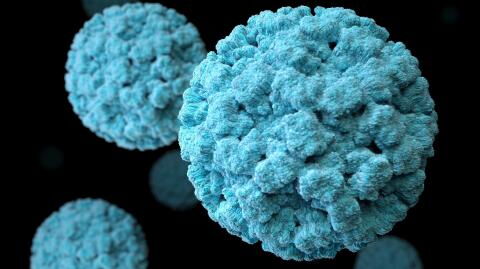The lockdownis gradually loosening in Wuhan (China), the epicentre of the pandemic, as deconfinement steps begin in the country. However, fears of a possible second wave of Covid-19 in the country are still present. This is particularly the case in the Chinese metropolis of Harbin, close to Russia, where the authorities have tightened restrictive measures. This comes after new outbreaksof contamination have been recorded, with a virus that could have a new, and even more aggressive genotype than that of SARS-CoV-2, according to Chinese scientists.
Discover our latest podcast
A second wave coming from abroad?
What if the dreaded second wave of the virus will be caused by people coming from abroad? This is what the Chinese authorities fear, claiming that the province of Heilongjiang, including Harbin, a city of eleven million inhabitants, has recently recorded an increase in cases of contamination, which could have come from the return of Chinese citizens who had travelled to Russia.
A mutation of the virus?
According to Chinese scientists, there are two strains, or 'variants' of the Covid-19 causing virus, representing two stages in its evolution. 'Population genetic analyses of 103 SARS-CoV-2 genomes indicated that these viruses evolved into two major types (designated L and S).'
Chinese researchers believe that the 'S' type of the virus could be the oldest, coming from animal strains. This virus is thought to be the least aggressive to humans, unlike the 'L' type, which evolved from the 'S' type and adapted to the human population. That's why it could be more contagious, and more dangerous than the 'S' type.
Caution to be taken, and numbers to be put into perspective
This information about a possible mutation is to be taken with a grain of salt, however, according to French authorities, who point out that the time has come for caution. 'It's not a mutation, it's an evolution. There is no particular argument about the fact that one is more virulent than the other. Studies are ongoing,' explained French Directeur Générale de la Santé Jerome Salomon.
There are also serious doubts about the accuracy of the figures put forward by China. According to the health authorities, since the beginning of the epidemic, Heilongjiang has officially recorded 921 confirmed cases of coronavirus contamination, including 384 'imported' cases.
New political measures and sanctions
Now, in Harbin, where new outbreaks have been discovered in two hospitals, people and vehicles from outside the city are banned from entering residential areas. An additional measure being taken is anyone arriving from abroad, or from areas severely affected by Covid-19 in China, will have to be placed under quarantine, the authorities announced.
For their part, the deputy mayor of Harbin, and the head of the municipal health agency have been 'sanctioned' for their 'lax' management of the epidemic, as the body responsible for supervising policymakers said last week.















